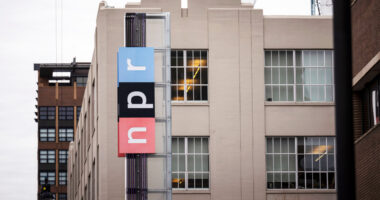
Federal Reserve Chairman Jerome Powell said it would be appropriate for the central bank to raise its benchmark interest rate at its meeting in two weeks amid high inflation, strong economic demand and a tight labor market.
Mr. Powell said it was too soon to tell how Russia’s invasion of Ukraine and the strict economic curbs imposed by the West against Moscow would influence the U.S. economy. But his overall remarks suggested growing urgency to tighten policy.
“Making appropriate monetary policy in this environment requires a recognition that the economy evolves in unexpected ways. We will need to be nimble in responding to incoming data and the evolving outlook,” Mr. Powell said in testimony prepared for delivery Wednesday during the first of two days of congressional hearings.
His remarks underscore the challenge facing the central bank as it prepares to raise interest rates for the first time since 2018. Russia’s invasion of Ukraine, which prompted the West to impose harsh financial sanctions against Moscow this week, threatens to worsen inflation pressures by disrupting supply chains and pushing up energy and commodity prices.
“The near-term effects on the U.S. economy of the invasion of Ukraine, the ongoing war, the sanctions, and of events to come, remain highly uncertain,” said Mr. Powell.
During geopolitical shocks, the Fed generally avoids taking steps that increase uncertainty. But with inflation running far above its 2% target and the Ukrainian crisis threatening to push prices even higher, the Fed could feel more pressure to raise rates.
Mr. Powell and his colleagues had anticipated U.S. inflation, now running at a 40-year-high, to peak this quarter.
Consumer prices in January rose 6.1% from a year earlier, according to the Fed’s preferred gauge. Excluding volatile food and energy categories, so-called core inflation rose 5.2%, close to a 40-year high.
Fed officials last spring and summer attributed most of the rise in inflation to supply-chain bottlenecks, which wouldn’t necessarily demand a policy response if those kinks were expected to resolve themselves. But in his testimony Wednesday, Mr. Powell suggested inflation was high because “demand is strong, and bottlenecks and supply constraints are limiting how quickly production can respond.”
The emphasis on demand is important because Fed interest-rate increases can reduce demand by slowing down hiring and economic activity more broadly.
SHARE YOUR THOUGHTS
How are you preparing for Fed rate increases? Join the conversation below.
Mr. Powell said he expected inflation to decline over the year as supply constraints ease and demand moderates due to tighter monetary policy and waning effects of fiscal stimulus from the past two years.
“But we are attentive to the risks of potential further upward pressure on inflation expectations and inflation itself from a number of factors,” he said. “We will use our policy tools as appropriate to prevent higher inflation from becoming entrenched.”
Mr. Powell characterized the labor market as “extremely tight” and said the types of broad-based employment gains the Fed sought last year as it maintained aggressive stimulus policies are “only possible in an environment of price stability.”
The global economy has been recovering from a series of “supply shocks,” in which shortages of goods or services drive up their prices. Textbooks call for central banks not to react to one-off increases in prices that result from temporary factors, such as natural disasters, and to instead focus on broader underlying inflation pressures.
But this could be tricky for the Fed right now because U.S. inflation is already high. Officials are turning anxious about an overheated labor market with wage gains well above their pre-pandemic highs and the risk that consumers and businesses will expect bigger price increases in the future, fostering persistently higher inflation.
Write to Nick Timiraos at [email protected]
Copyright ©2022 Dow Jones & Company, Inc. All Rights Reserved. 87990cbe856818d5eddac44c7b1cdeb8








